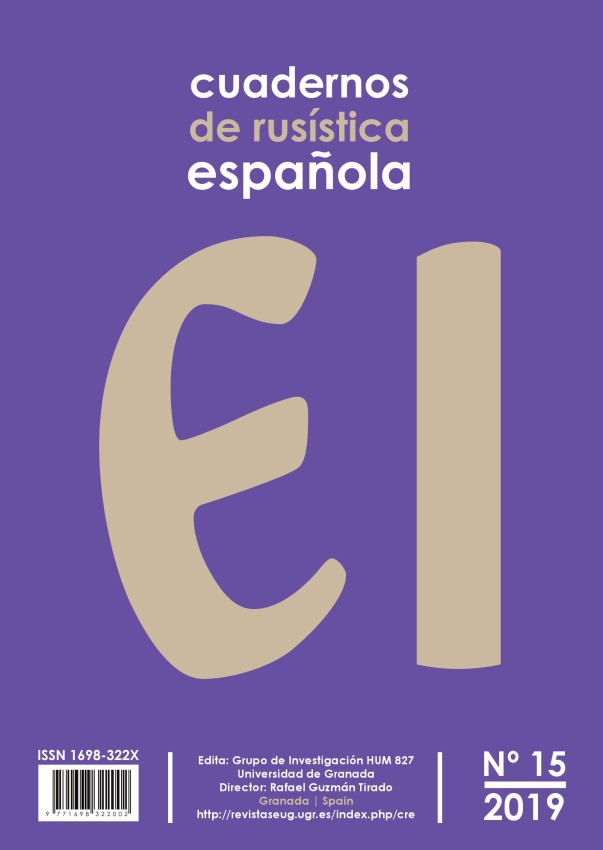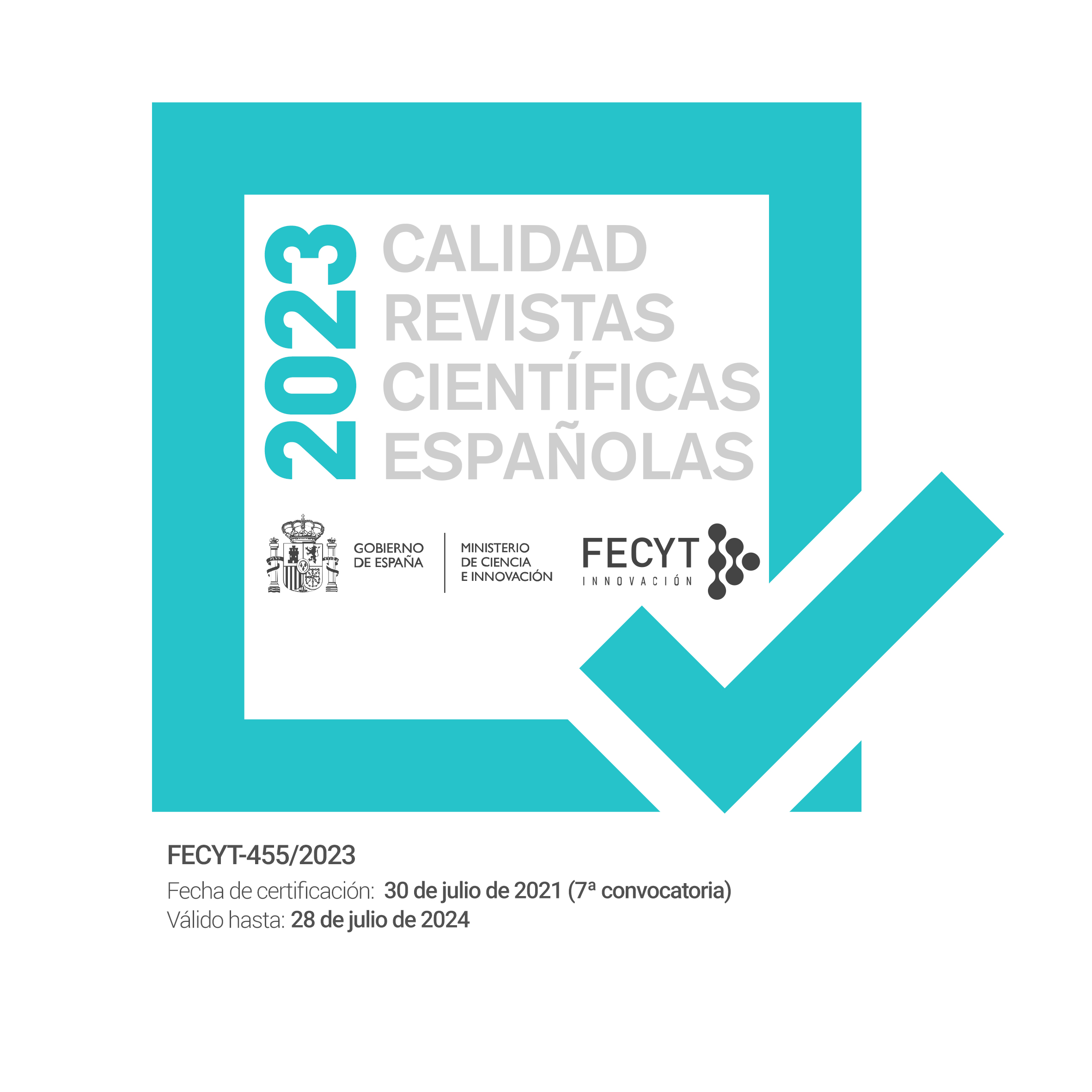Russian linguists: scientometric ranking
DOI:
https://doi.org/10.30827/cre.v15i0.9755Keywords:
scientometrics, Russian linguists, citation rate, h-index, Russian Science Citation Index, self-citation indexAbstract
The article deals with scientometric analysis of publications by 40 wide-known Russian linguists. The linguists are ranked by h-index, the number of publications and citations according to the data of Russian Science Citation Index. This research examines the factors affecting h-index and citation rates: involvement in leading research areas, carrying out scientific inquiries in top universities and academic research institutes, high prestige of relevant journals and publishers, and publishing textbooks and monographs. The s-index (self-citation index) is proposed as an additional scienometric measuring of individual's publication record. The s-index is computed by taking the ratio of h-index to h-index calculated without self-citations. It is concluded that scientometric analysis of h-index and s-index can be one of the objective tools for evaluation of scholars. At the same time, the methods of scientometrics need to be improved, including better coordination of national databases and global scientometric sources (Scopus, Web of Science, etc.). A promising area of applied scientometrics is the use of expert assessments made by qualified specialists in the relevant field of knowledge and the expansion of evaluation parameters.
Downloads
References
AKSNES, D. W., SCHNEIDER, J. W., GUNNARSSON, M. (2012): “Ranking national research systems by citation indicators: A comparative analysis using whole and fractionalised counting methods”, Journal of Informetrics, 6, pp. 36–43.
BAR-ILAN, J. (2008): “Which h-index? — A comparison of WoS, Scopus and Google Scholar”, Scientometrics, 74 (2), pp. 257–271.
BEREZOVICH, E. L. (2019): “Prikladnaya naukometriya”, Antropologicheskij forum, 40, pp. 11–84.
BORNMANN, L., DANIEL, H. D. (2007): “What do we know about the h-index?” Journal of the American Society for Information Science and Technology, 58 (9), pp. 1381–1385.
BRAUN, T., GLÄNZEL, W., SCHUBERT, A. (2006): “A Hirsch-type index for journals”, Scientometrics, 69 (1), pp. 169–173.
CRONIN, B., MEHO, L. (2006): “Using the h-index to rank influential information scientists”, Journal of the American Society for Information Science and Technology, 57 (9), pp. 1275–1278.
CSAJBÓK, E., BERHIDI, A., VASAS, L., SCHUBERT, A. (2007): “Hirsch-index for countries based on Essential Science Indicators data”, Scientometrics, 73 (1), pp. 91–117.
EGGHE, L. (2006): “Theory and practise of the g-index”, Scientometrics, 69 (9), pp. 131–152.
EGGHE, L., ROUSSEA, R. (2019): “A geometric relation between the h-index and the Lorenz curve”, Scientometrics, 119(2), pp. 1281–1284.
FOLEYA, A. J., SALAAB, S. D. (2010): “The impact of self-citation”, Cortex, 46 (6), pp. 802–810.
GINGRAS, Y., KHELFAOUI, M. (2018): “Assessing the effect of the United States’ “citation advantage” on other countries’ scientific impact as measured in the Web of Science (WoS) database”, Scientometrics, 114 (2), pp. 517–532.
GLÄNZEL, W. (2006): “On the opportunities and limitations of the h-index”, Science Focus, 1 (1), pp. 10–11.
HIRSCH, J. E. (2005): “An index to quantify an individual’s scientific research output”, Proceedings of the National Academy of Sciences of the United States of America, 102(46), pp. 16569–16572.
KELLY, C. D., JENNIONS, M. D. (2006): “The h-index and career assessment by numbers”, Trends in Ecology & Evolution, 21 (4), pp. 167–170.
KOSMULSKI, M. (2006): “I—a bibliometric index”, Forum Akademickie, 11, p. 31.
MIHAJLOV, O. V. (2017): Citirovanie i citiruemost' v nauke: obshchie principy citirovaniya, sovremennye kolichestvennye pokazateli citiruemosti, citiruemost' i kachestvo nauchnoj deyatel'nosti issledovatelya. LENAND. Moskva.
PRATHAP, G. (2006): “Hirsch-type indices for ranking institutions' scientific research output”, Current Science, 91 (11), pp. 1439.
PRAUS, P. (2019): “High-ranked citations percentage as an indicator of publications quality”, Scientometrics, 120(1), pp. 319–329.
SCARPA, F., BIANCO, V., TAGLIAFICO, L. A. (2018): “The impact of the national assessment exercises on self-citation rate and publication venue: an empirical investigation on the engineering academic sector in Italy”, Scientometrics, 117 (2), pp. 997–1022.
SCHUBERT, A. (2007): “Successive h-indices”, Scientometrics, 70 (1), pp. 183–200.
SCHUBERT, A., GLÄNZEL, W. (2007): “A systematic analysis of Hirsch-type indices for journals”, Journal of Informetrics, 1 (3), pp. 179–184.
STERNIN, I. A. (2019): Pis'mo professora VGU Iosifa Sternina ob izmeneniyah v upravlenii naukoj i obrazovaniem v Rossii. https://philologist.livejournal.com/10921642.html
TEIXEIRA DA SILVA, J. A. (2018): “The Google Scholar h-index: useful but burdensome metric”, Scientometrics, 117(1), pp. 631–635.
VAN RAAN, A. F. J. (2006): “Comparison of the Hirsch-index with standard bibliometric indicators and with peer judgment for 147 chemistry research groups”, Scientometrics, 67 (3), pp. 491–502.
VAN RAAN, A. F. J. (2008): “Self-citation as an impact-reinforcing mechanism in the science system”, Journal of the American Society for Information Science and Technology, 59(10), pp. 1631–1643.
ZHENGRA, I. (2018): Oshibki v ocenke nauki, ili Kak pravil'no ispol'zovat' bibliometriyu. Novoe literaturnoe obozrenie. Moskva.












